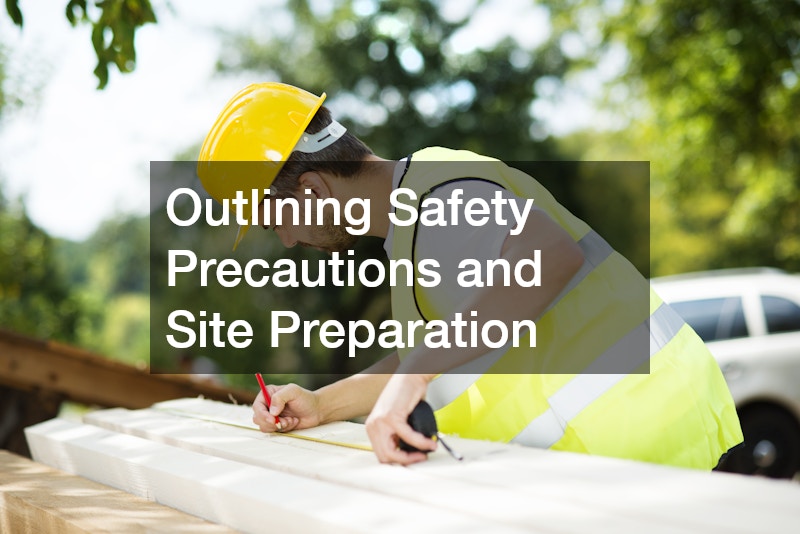Establishing A Home Remodeling Plan
Embarking on a home remodeling project can be an exciting but complex endeavor that requires careful planning and organization. To ensure a smooth process and a successful outcome, having a comprehensive home remodeling checklist is essential. A well-thought-out checklist serves as a roadmap, guiding each stage of the project and helping you manage both the big-picture goals and smaller details. This checklist helps homeowners navigate crucial steps, from initial budgeting and timeline creation to hiring qualified contractors and selecting materials. With each phase clearly outlined, a home remodeling checklist provides structure and ensures nothing falls through the cracks, ultimately reducing stress and surprises.

Setting a Clear Budget and Financial Plan
Establishing a clear budget is one of the most crucial steps in any home remodeling checklist. A realistic budget ensures that you have the financial resources necessary to complete the project without unnecessary setbacks or compromises. This step involves calculating the total expected costs, including materials, labor, permits, and unexpected expenses, which may arise during the remodeling process. By setting a solid budget, you can focus on your financial priorities and avoid costly surprises later on. In addition to estimating expenses, planning how to finance the project is equally important, whether through savings, financing options, or loans. Setting a clear budget from the outset helps you avoid financial strain and enables you to make decisions that align with your financial goals.
For a specific example, if your project involves a bathroom remodel, consider not only the cost of essential fixtures, like sinks and toilets but also the expenses associated with specialized labor, such as plumbing or tiling. You may want to allocate funds for unexpected costs, such as structural changes or adjustments to outdated plumbing. Including these details in your budget allows for a smoother remodeling process and ensures that your bathroom remodel meets your quality and design standards. This level of financial planning on your home remodeling checklist provides clarity and sets the foundation for each stage of the remodeling journey.
Defining the Scope of Your Remodeling Project
Clearly defining the scope of your project is essential for creating a realistic home remodeling checklist. The scope determines which rooms or areas will be remodeled, the extent of the changes, and the type of upgrades you envision. By outlining these specifics early on, you can streamline decision-making, avoid scope creep, and communicate more effectively with contractors. Defining the project scope also allows you to assess what’s feasible within your budget and timeline, setting clear boundaries for the work. Whether you’re planning a minor renovation or a major overhaul, an accurately defined scope helps manage expectations and ensures all parties are on the same page.
For instance, if your project includes swimming pool remodeling, defining the scope might involve deciding whether to focus solely on resurfacing the pool or to include new features like lighting, a deck, or energy-efficient heating systems. Detailing these aspects in your home remodeling checklist provides clarity on both design elements and functional upgrades.

Researching and Hiring Qualified Contractors
Selecting the right contractors is a crucial step in any home remodeling checklist, as the quality and expertise of the team you hire can significantly impact the success of your project. Researching potential contractors includes reviewing their portfolios, checking references, and verifying credentials to ensure they have the skills and experience needed for your specific remodel. Additionally, reading reviews and asking for referrals can provide insight into their work ethic, communication style, and reliability. Hiring qualified contractors who are licensed and insured not only safeguards the project but also helps build trust, giving you peace of mind that the work will be done professionally and to high standards.
For a project like a basement remodel, you may want to seek contractors who specialize in structural changes, waterproofing, or energy-efficient insulation. Basement renovations often involve unique challenges, such as moisture control and limited natural light, which require specialized expertise. Including these requirements in your home remodeling checklist ensures that you hire contractors who are prepared for the specific demands of a basement remodel. By carefully selecting a qualified team, you can look forward to a remodeling experience that’s well-coordinated and meets your vision for a transformed and functional space.
Creating a Realistic Project Timeline
Establishing a realistic timeline is essential for keeping your remodeling project on track and ensuring that each phase is completed in an organized manner. A clear timeline breaks down the project into manageable steps, outlining when each task—such as demolition, installation, and finishing touches—should be completed. Working with your contractors to set a timeline helps align expectations and minimizes disruptions, particularly if you are living in the home during the remodel. A well-structured timeline in your home remodeling checklist provides clarity and helps you plan around the work, reducing the chance of delays and budget overruns.
In a project involving residential plumbing, for example, it’s vital to allocate adequate time for planning, installation, and inspection. Plumbing work often requires precise scheduling, as it can impact other parts of the remodel, such as flooring or cabinetry. Including these timing considerations in your home remodeling checklist helps you and your contractors avoid delays and ensures that essential services are in place before moving on to other tasks. A realistic timeline allows the project to progress smoothly, helping you stay on target for a successful and timely completion.

Planning for Necessary Permits and Approvals
Obtaining permits and approvals is a vital part of the home remodeling checklist that should not be overlooked. Many remodeling projects, particularly those involving structural changes, electrical work, or plumbing, require permits to ensure the work complies with local building codes. Failing to secure these permits can lead to fines, project delays, or issues when selling the property in the future. By identifying which aspects of the project require permits early on, you can streamline the approval process and avoid unnecessary complications. A professional contractor can assist with this step, guiding you through the requirements and handling submissions on your behalf.
If your project includes upgrades like residential air conditioning installation, a permit may be required to ensure the system meets local safety and efficiency standards. Including permit requirements in your home remodeling checklist ensures that all necessary documentation is in place before the work begins, minimizing potential delays. Having permits and approvals in order protects both the integrity of the project and the long-term value of your home, allowing you to remodel with confidence and in compliance with local regulations.
Selecting Materials and Finishes in Advance
Choosing the right materials and finishes in advance is a critical step in your home remodeling checklist. By selecting items like flooring, cabinetry, countertops, and fixtures ahead of time, you help streamline the project and ensure that all elements align with your design vision. Early selection also allows you to account for availability and lead times, preventing delays that can occur when materials are out of stock or on backorder. Additionally, choosing finishes in advance helps with accurate budgeting, as you can compare costs and avoid last-minute expenses. A thoughtful approach to selecting materials ensures that each aspect of the remodel contributes to a cohesive and polished final result.
For a remodel involving residential roofers, for example, selecting the appropriate roofing material—such as asphalt shingles, metal, or tile—will impact not only the project’s budget but also its timeline and durability. Including roofing material selection in your home remodeling checklist allows you to consult with your contractor on the best options for your climate and home style, ensuring the roof enhances both the functionality and appearance of your property.

Outlining Safety Precautions and Site Preparation
Ensuring safety and proper site preparation is a fundamental aspect of any home remodeling checklist. A remodeling project can pose various risks, especially if demolition or construction work is involved. Before beginning the remodel, it’s essential to establish safety protocols to protect your household, workers, and the property itself. This includes clearing out valuables, setting up barriers to limit dust, and planning for temporary living arrangements if the work will be disruptive. Addressing these considerations early on helps create a safe and efficient work environment, minimizing the chance of accidents and safeguarding your home throughout the remodel.
If your project involves residential painting, for instance, it’s important to plan for ventilation and proper protective measures to avoid exposure to fumes and chemicals. Including these safety measures in your home remodeling checklist not only protects your health but also ensures that the paint application process goes smoothly and yields lasting results.
Preparing for Utility Adjustments and Upgrades
Home remodeling often involves adjustments to essential utilities, such as electricity, plumbing, or heating systems. Preparing for these adjustments is an essential part of your home remodeling checklist, as it ensures that any necessary utility work is completed safely and efficiently. Whether it’s upgrading an electrical panel to handle new appliances or installing updated plumbing fixtures, addressing these needs early on helps prevent disruptions. Working closely with utility professionals also ensures that all upgrades meet current standards and are compatible with the planned changes, supporting the functionality of your remodeled space.
For example, if your remodel requires a local electrical contractor to install additional outlets or update wiring, this task should be planned in conjunction with other stages of the project to avoid scheduling conflicts. Including utility adjustments in your home remodeling checklist allows for a coordinated approach, ensuring that essential systems are ready and functional before moving on to the finishing touches.
Establishing a Communication Plan with Contractors
Effective communication with contractors is essential for a smooth remodeling process, and setting up a communication plan should be part of any home remodeling checklist. Clear, consistent communication ensures that everyone involved in the project is aligned on expectations, timelines, and any potential changes. This may involve setting up regular check-ins, defining preferred methods of contact, or even using project management software to keep track of progress. A strong communication plan helps prevent misunderstandings and allows you to address issues promptly, ensuring that your vision for the remodel is accurately realized.
For specific projects, such as residential demolition, clear communication is especially important. Demolition work can be disruptive, requiring careful coordination with contractors to manage timing, safety protocols, and debris removal. Including these details in your home remodeling checklist ensures that you stay informed and engaged throughout this critical phase, allowing for smooth transitions to subsequent stages of the project.
Finalizing Post-Remodeling Cleanup and Inspections
After the major work is complete, post-remodeling cleanup and inspections are necessary steps in the home remodeling checklist to ensure that your home is ready for use. Cleanup involves removing debris, dust, and leftover materials, as well as restoring your space to a clean and livable condition. Professional cleaning services or contractor-led cleanup can save time and ensure that all areas are thoroughly addressed. Once the space is clean, a final inspection verifies that all work meets quality standards, adheres to local codes, and aligns with the original plans. This last step ensures that the remodel is complete and that any necessary adjustments or touch-ups are identified and addressed.
For a project that involves a local locksmith, for instance, you may want to have the final inspection include a check of all new locks and security features to confirm they are functioning correctly. Including this in your home remodeling checklist provides peace of mind, knowing that both aesthetic and practical aspects of the remodel are satisfactory and meet your safety standards.
Utilizing Your New Checklist
A comprehensive home remodeling checklist serves as a valuable tool for guiding you through each stage of a renovation, ensuring that the project is organized, efficient, and successful. From setting a budget to final inspections, every step plays a role in creating a well-planned remodel that aligns with your vision and needs. By taking the time to research, select qualified contractors, and outline each phase—from material selection to utility upgrades—you lay the groundwork for a seamless remodeling experience. Additionally, addressing safety precautions, establishing a communication plan, and preparing for cleanup and inspections ensures that the project is carried out with attention to detail and quality.







